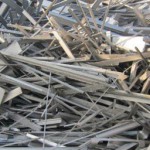Innovative Sorting Solutions improve Aluminum Recycling
October 11, 2016
Sense2Sort recycling innovations: Sorting Aluminum Alloys cost efficiently with XRF & LIBS Technologies
The recycling of aluminum products ensures that this valuable metal can be re-used over and over again. Major Aluminum Recyclers and Secondary Smelters have been searching for solutions to improve and extend the volume of their recycling businesses, both qualitatively and quantitatively. A major challenge has been the fact that a very high majority of scrap dealers do not supply their customers with scrap material that is ready to melt to their specifications. Thus, these secondary smelter customers must correct the incoming scrap as they melt it. These adjustments are costly – in terms of time, energy, materials, and throughput.
Sense2Sort alliance partners Austin AI (US based) and Toratecnica (Europe based) have launched an innovative sorting process technology that bridges the gap between the scrap dealer’s typical nondescript mix of scrap alloys and the smelter’s specific needs for furnace in-feed scrap. Now, for shredded scrap, it is possible to create a melt ready aluminum fraction from Twitch and Zorba. Now, for production scrap, it is possible to extract specific alloys from binary, tertiary, and quaternary mixes – such as 5XXX and 6XXX series – in a high purity and economically efficient manner!
Innovative Sorting Solutions improve Aluminum Recycling
A BIG STEP AHEAD: ADVANCED SORTING TECHNOLOGIES IMPLY XRF AND LIBS BASED SORTING TECHNOLOGIES
Efficient Sorting Ensures High Qualities, High profits and serves the environment
Looking at today’s recycling processes, Aluminum can be recovered at a purity of up to 98% via waste and scrap recycling. In comparison with primary Aluminum production, up to 95% of the energy needed to smelt bauxite ore is saved. In the automobile industry as one example, the use of Aluminum has grown considerably in the past years. However, traditional aluminum recyclers have lacked the sorting technology that allowed the creation of melt ready aluminum streams – so a large proportion of the specific alloys each manufacturer demands is made from primary ingot. Now finally, the missing pieces have appeared: Using XRF and LIBS technology, Sense2Sort have developed the technologies that allow all sorting requirements to be fulfilled and melt ready packages be created in a completely automatic recovery process from waste scrap. This is the final step to a cradle-to-cradle process, resulting in huge energy savings and highly profitable recycling processes.
XRF and LIBS Technologies surpass XRT in metal recycling applications in terms of cost efficiency and technical advantages
In the recent past, sorting Aluminum alloys by means of XRT (X-ray-Transmission) technology has been tried. However, this expensive sensor technology (based on the physical property of material density) is not precise enough for specific alloy sorting. Additionally, extra material preparation stages like sizing for XRT sorting is costly and time consuming. Sorting with XRT has demonstrated to be cost inefficient and yielding poor product quality when used beyond the stage of rough sorting light and heavy metal alloys commonly found in shredder scrap.
XRT sorting technologies alone are not good enough for most aluminum recycling applications. Chemistry is the Key.The scrap processor to scrap consumer business link is therefore in need of a better bridge by which they may conduct their trade. In the Sense2Sort model, the XRT approach is thus followed by XRF (X-Ray Fluorescence) technique. Using the XRF sensor technology, aluminum alloys can be classified cost efficiently, at a high quality, and at an economically viable throughput performance. Different than XRT, which results merely in black white imaging as sorting criteria, XRF sensing allows the definition of plain material composition according to the atomic elements table (fig.1). XRF, and its partner technology in Sense2Sort’s first-of-its-kind scrap metal processing line, LIBS, are elemental analyzers that use the chemistry of the target material for identifying or sorting criteria. For example, the XRF technology has proven usage for the scrap metal processors in sorting their Zorba und Zurik. XRF extracts Zn, Cu, Ni, Fe, etc., from the Zorba; and extract only PCB’s or Cu from Zurik mater




